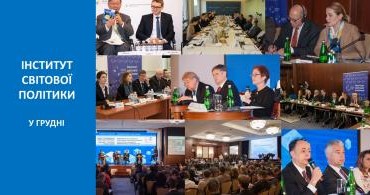Policy paper was prepared within the joint project of the Institute of World Policy and Caucasian House “Ukraine: out of the crisis through dialogue”, supported by the British Embassy in Ukraine.Authors:
Maryna Vorotnyuk, Ph.D., Senior Research Fellow of Odessa Branch of the National Institute for Strategic Studies (Ukraine)
Mariia Zolkina, Analyst at Ilko Kucheriv Democratic Initiatives Foundation (Ukraine)
Medea Turashvili, Senior Advisor to the Public Defender on Human Rights Issues in Conflict Affected regions (Georgia)
To download the full text of policy paper in Russian and English please click here.
In 2014 the European security architecture was shaken by unprecedented redrawing of political map, when Russia annexed Crimea and supported separatism in eastern Ukraine. These events came to epitomize new Russian revisionist approach to the world order. It was year 2008, though, which was already a precursor to the current developments, when a 5-day Russian-Georgian war over South Ossetia served as a sobering reminder that offensive is still an instrument to handle disputes in Europe. Traditionally, Georgia and Ukraine found themselves to be two companions in misfortune – both were post-Soviet states with heavy Soviet legacies, troublesome relations with Russia that tried to hold them in leash, ambiguous prospects of their European and Euro-Atlantic aspirations, and painful reformation agendas. As of lately, since 2014, one cannot escape drawing another parallel between the two states – the problem of break-away regions, Georgian Abkhazia and South Ossetia, and Ukrainian Crimea and Donbass.
This paper is a collective endeavor of Georgian and Ukrainian authors to look at the annexation of Crimea and ongoing conflict in Donbass and Ukrainian strategy to cope with them through the lenses of Georgian experience and strategy towards occupied regions. The original ambition of this policy paper was to shed a light on the history of Abkhazia and South Ossetian conflicts and to make a much-needed analysis on the way Ukraine can capitalize on the Georgian experience.
In light of the annexation of Crimea by Russia and the subsequent conflict in Ukrainian Donbass, this paper seems to be a timely endeavor to draw the parallels between the paths conflicts in Georgia took since early 1990s and the final destinations Georgian government’s responses brought them to, and the ways Ukrainian authorities are tackling the problems of secessionist regions now.
Georgia is the most often-cited success story in Ukrainian public discourse of groundbreaking reforms in the field of police, judiciary and fight with corruption. It is hard to deny, though, that in 20 years Georgian policy towards occupied regions had its ups and downs and so far Georgian authorities have fallen short of making any meaningful shift in the relations with the break-away regions. This is not to say that this is solely Georgian government who is to lay responsibility on. There are other factors such as Russian direct support to the unrecognized Abkhazia and South Ossetian authorities and their creeping annexation by Russia, interests of regional elites and ethnic animosities, as well unfavorable international environment that undermine the prospects of conflict resolution. One of the differences between two cases is the present stance of the Russian-Georgian and Russian-Ukrainian relations.
Recently Georgia has undertaken the efforts to normalize its relations with Russia. While diplomatic relations are still absent since 2008, the bilateral, special envoys format and multilateral Geneva format serve the grounds for Georgian-Russian dialogue. Very important for keeping the dialogue on track, still, the negotiations didn’t bring tangible results and the extent of the progress still remains to be seen. In its turn, the Ukrainian-Russian relations were never worse and the efficiency of Ukrainian strategy towards the occupied regions is sure to be undermined by an open protracted armed conflict with Russia’s implicit involvement.
Moreover, the status of the unrecognized entities differ which makes any parallels quite relative. Abkhazia and South Ossetia proclaimed themselves independent and Russia recognized them after 2008, though the developments on-ground indicate their gradual in corporation by Russia Crimea, which was annexed by Russia to become another subject of federation, is a different case here. As for the so-called Donetsk and Luhansk people’s republics, Russia continues to maintain their viability in order to have Russian say on Ukraine’s future by keeping part of Ukrainian territory unstable.
Though each of the cases is unique per se and the authors are quite conscious of the unavoidable limitations of any generalizations concerning Georgian and Ukrainian cases, it is remarkable that the initial responses of Ukrainian government has been falling along the same logic and on many terms Ukrainian policy-makers are trapped with the same problems. Now, since more than 20 years when the problem of the secessionist territories in Georgia emerged, there are enough of lessons learnt by Georgia to be capitalized on by Ukrainian government before the non-return point in its relations with secessionist entities has not been (arguably) passed. Thus, the authors confine themselves to presenting this paper as an attempt of laying the first brick in the foundation of further academic and expert discussions on the subject.
The main arguments of the paper proceed as follows. Firstly, there is an outline of the Georgian experience of dealing with occupied territories of Abkhazia and South Ossetia. Secondly, the paper looks at the present state of Crimean issue and Ukrainian strategy on Crimea. The last part of the paper turns to the Donbass case analyzing the perspectives of reintegration and reconciliation in eastern Ukraine.
In the first part of the paper, on Ukraine’s policy towards the occupied territory of Crimea, Maryna Vorotnyuk outlines the general context of annexation of Crimea by Russia. She then provides the analysis of Russian policy to integrate Crimea and points to the fact that Crimea under the international isolation becomes a “grey zone” with massive violations of human rights. Then the author analyses Ukrainian strategy regarding occupied territory of Crimea and gives the reasons why fundamentals of Ukrainian strategy on Crimea are far from complete and effective.
The next part of the paper covers Ukrainian policy towards Donbass where the issue of communication with local population is of outmost importance, according to Maria Zolkina. She focuses on defining key problems and challenges in the realm of public opinion in Donbass that have to be addressed by Ukrainian authorities. The author suggests the factors conducive to an effective dialogue and potential obstacles to communication with the population of Donbass.
In the last part of the paper, focusing on Georgia’s conflict resolution endeavours, Medea Turashvili argues that Georgian conflicts, like the problem of secessionist regions in Ukraine, have two dimensions: local dimension of Georgian-Abkhaz and Georgian-South Ossetian disputes, and international dimension of Georgian-Russian and Russian-Western controversies. She outlines policies and approaches that different Georgian governments have employed to reach out to the populations living in breakaway regions and provides some lessons learnt that can be relevant for Ukrainian experts and policymakers.
The common conclusions of the authors attempt to bridge both countries’ experiences showing what Ukraine can take from Georgian experience of dealing with occupied territories. Most importantly, this final part provides recommendations on what Ukrainian decision-makers and civil society can undertake in order to deal with the break-away territories.




Comments theme
Comments themeComments themeComments themeComments themeComments themeComments themeComments themeComments themeComments themeComments themeComments themeComments themeComments themeComments themeComments themeComments themeComments themeComments themeComments themeComments.